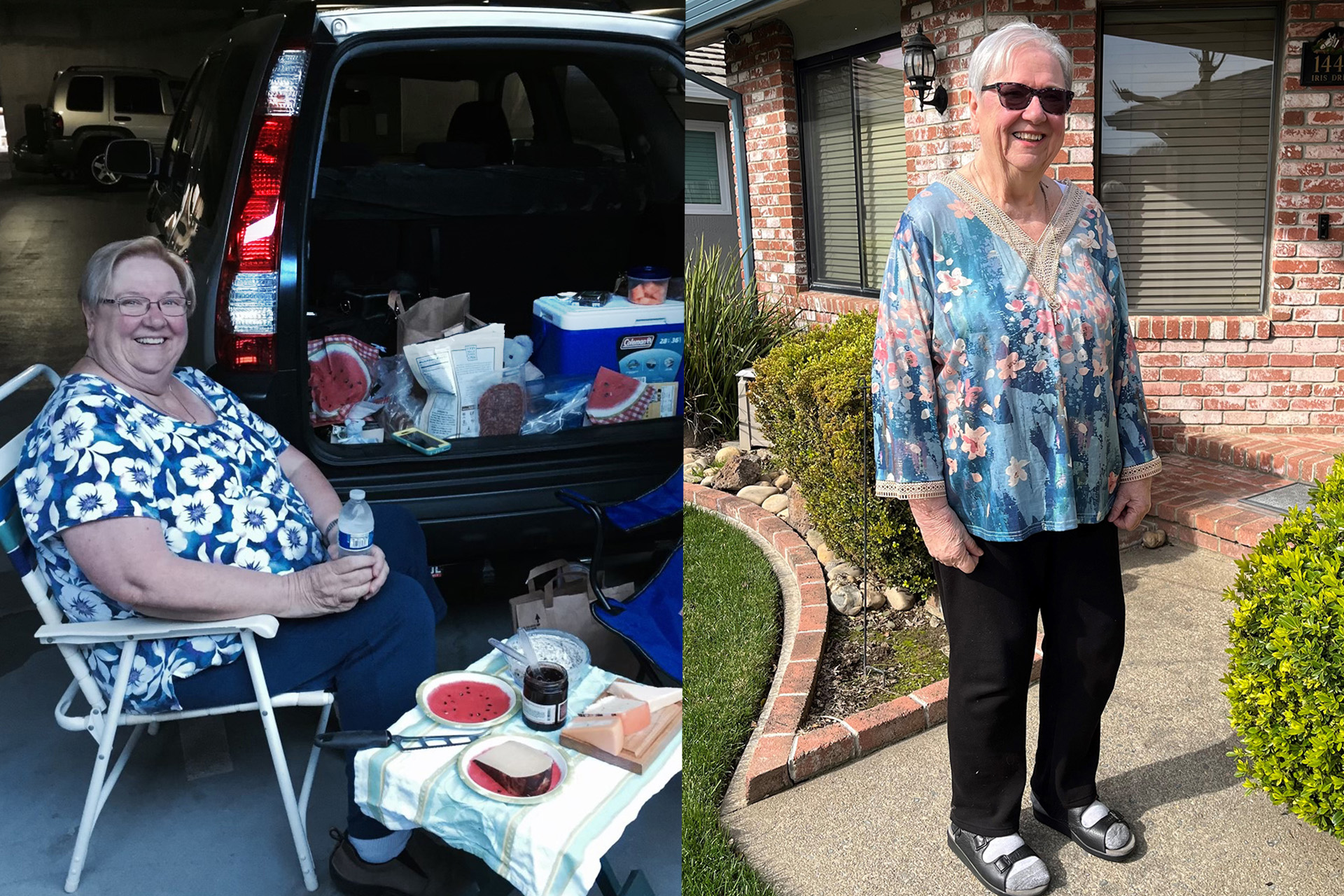Last fall the Food and Drug Administration recommended that Americans limit their added sugar to no more than 12.5 teaspoons a day. Kaiser Permanente registered dietitian Ayn Garvisch has tips to help you achieve that.
A year and a half ago, Kaiser Permanente Santa Rosa registered dietitian Ayn Garvisch tried a radical experiment.
“I decided to cut out added sugar for as long as I could,” she explained.
She allowed herself foods with naturally occurring sugar, such as fruit and milk; but she stopped adding sugar to her morning coffee, cut out chocolate after dinner, and she closely examined the nutrition labels for all the packaged foods she considered eating so she could eliminate added sugar.
Cutting out added sugar was tough, especially for the first two weeks, but she has managed to keep her experiment going while also eating a diet based on fresh whole foods instead of processed ones. She says she doesn’t crave sweets anymore, has maintained a healthy weight, and feels her energy level is more even throughout the day.
With the U.S. Food and Drug Administration now recommending that Americans limit the added sugar in their diet to no more than 12.5 teaspoons a day Garvisch offered some advice on cutting back on the sweet stuff.
What is added sugar?
Added sugar is any sugar that is added to food or beverages during processing or food preparation. Through my research, I found that 74 percent of packaged foods in grocery stores contain added sugar. This includes items that are not obviously sweet tasting. The biggest culprits are items like sweetened yogurt and granola bars, but I also found added sugar in surprising places, such as bread, pasta sauce, pita chips, and hummus.
Why should we cut back on added sugar?
The average American takes in 22 to 30 teaspoons of added sugar each day, and that’s just too much. That adds up to 66 pounds of added sugar per year! It contributes to obesity, diabetes, hypertension, high triglycerides, and something called metabolic syndrome, which is a combination of all the things I just mentioned.
Eating sugar can also lead to feeling like you need to eat more sugar. It’s a vicious cycle.
How can we start cutting back?
Start by looking at food labels, and know that four grams of sugar equals one teaspoon. The grams of sugar listed on food labels don’t distinguish between added sugar and naturally occurring sugar, so it’s not easy. But you can look for added sugar in the ingredient list — and if sugar is in the top handful of ingredients, you know there’s quite a bit of added sugar in that product.
There are many names for sugars. Look for words that end with the letters “ose,” such as sucrose, glucose, and high fructose corn syrup. There’s also corn syrup, brown sugar, malt syrup, and honey.
Foods with lots of added sugar include soda, juices, flavored coffee drinks, jelly, and candy.
What about artificial sweeteners?
Research is still ongoing, but I generally don’t recommend them to my patients. They haven’t been proven to aid in weight loss and they’re actually sweeter than most sugar, so they don’t help reduce cravings for sweets. I could see a soda drinker trying diet soda (which contains artificial sweeteners) as a replacement for a period of time, but I don’t recommend them long term.
Other advice?
Cutting out added sugar completely is not for everybody, so I recommend starting with small changes. Try halving your juice with water or customizing your coffee drink to contain one to two “pumps” of flavored syrup instead of four to lessen your sugar load and begin to reduce your taste for highly sweet things.
Eat less highly processed foods with added sugar such as white breads, crackers, cookies, and cakes. The idea is to replace the processed foods with whole grain or whole foods. Whole foods such as milk, vegetables, and fruit have naturally occurring sugar, and they also have other great nutrients, and fiber. Eating whole foods will help you regulate hunger, and not feel deprived.
Consider logging what you eat because research shows that can help increase your awareness and make changes stick. Two free and useful apps for logging are My Fitness Pal and Lose It!
KP members who are interested in achieving a healthy weight can find additional resources at kp.org/healthyweight.





This Post Has 3 Comments
Great article. I was reading it eating humus and not realizing that it has sugar content. I am inspired to take a closer look at my food choices especially with respect to sugar. Sugar is a major contributor/cause of inflammation which in turn triggers many illnesses. Great article and feed back comments. Thank you.
Thank you so much for those tips. Just like everyone else, I have tried to stay away from added sugar and it sure isn’t easy but I keep trying and trying. I do not drink sodas but I do like to make tea with fresh lemons and add sugar (!) sometimes when I have cravings. I also try to use gum as a substitute for my sweet tooth and I look for those without aspartame; I have to say that it does help me; however, I do believe that I am addicted to sugar. Each time I go off of sugar for just a day or two, I feel “funny.” I can’t explain exactly but I do know that it is because I did not have any sugar at all (no yogurt, etc.) and once I bite into pure sugar like a candy or a piece of cake, then right there and then I am myself again… The more I read, the more I find ways to “cheat” without sacrificing my commitment.
Thank you for this piece, it has inspired me to undertake a “No Added Sugar” challenge myself. Sugar has always been a tough habit for me to break, but I know from previous experience that reducing or eliminating it also does great things for my energy levels, and reduces cravings significantly.